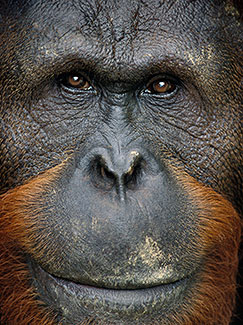|
The
Place
The
country of Malaysia is geographically divided into eastern and western
parts. East
Malaysia consists of two states, Sarawak and Sabah, located on the island
of Borneo. The island of Borneo contains these two Malaysian states, the
tiny but extremely wealthy country of Brunei, and Kalimantan, Indonesia. The remainder of Malaysiaís thirteen states
are located in West Malaysia, also known as the Malayan
peninsula or Malaya. West
Malaysia is much more developed and contains Malaysiaís cosmopolitan capital city,
Kuala Lumpur. To the north of peninsular Malaysia is the country of
Thailand, and to its south is the Republic of Singapore.
|
|
The
People and Their Languages
The
Malays, Chinese, and Indians comprise most of the Malaysian population.
There are several other minority groups including aboriginal people or orang
asli. Most Malaysians are friendly, easy going, and helpful.
English is widely spoken, but in rural villages this is not always the
case. Bahasa Malaysia is the official language, but other languages
such as Mandarin, Iban, and Tamil dominate in some
areas.
It is worth
mentioning that certain native tribes object to
having their pictures taken for religious or superstitious reasons. When
in doubt, itís best to find out before tripping the shutter.
|
Getting
There
From
the United States one can fly either east or
west to Malaysia. The total transit time from Ohio to Kuala Lumpur ranges from
about 28 hours to 34 hours, depending on the route and layovers. Between 22 and 24
hours are spent in the air. The easterly route stops somewhere in the Middle East. The westerly route has
a stop somewhere in Japan or China. Relax, stand up, walk around often,
and sleep if and when you can.
Walking and stretching while on any long plane trip is important because it prevents
deep vein thrombosis (DVT), a life-threatening condition sometimes caused by sitting for long
periods. The plane will land after what seems like an eternity. When you
arrive at Kuala
Lumpur International Airport, you will find it to be very modern and
efficient. The passage through customs is fast and easy. Taxis are cheap
and plentiful, and tickets for one are gotten just outside the
international arrival hall inside the airport. Rental cars are available
too, they drive on the opposite side of the road compared to America and
the traffic in Kuala Lumpur is unbelievable. These two facts could easily
lead to a disaster. However you go, the drive from the airport
to Kuala Lumpur takes about 45 minutes.
|

Windows
of the Soul, Orangutan, Borneo |
If
you use electronic flash to photograph orangutans, you may end up
without a camera. This image was taken in available light at 600 mm on Provia 400 film pushed to ISO 800.
|
|
|
Jet
Lag
Depending
on whether daylight saving time is in effect, there is a twelve or
thirteen hour time difference between eastern
time in the United States and the time in Malaysia. After
being in transit for so long and passing through numerous time zones and a
date line, the zombie-like feeling of jet lag is unavoidable. It gets a
little better each day and the time it takes to feel normal again varies
from person to person. I usually feel reasonably good on the fourth day,
but complete normalcy doesn't happen for about a week. It is interesting
that the jet lag is much worse when coming back home.
|